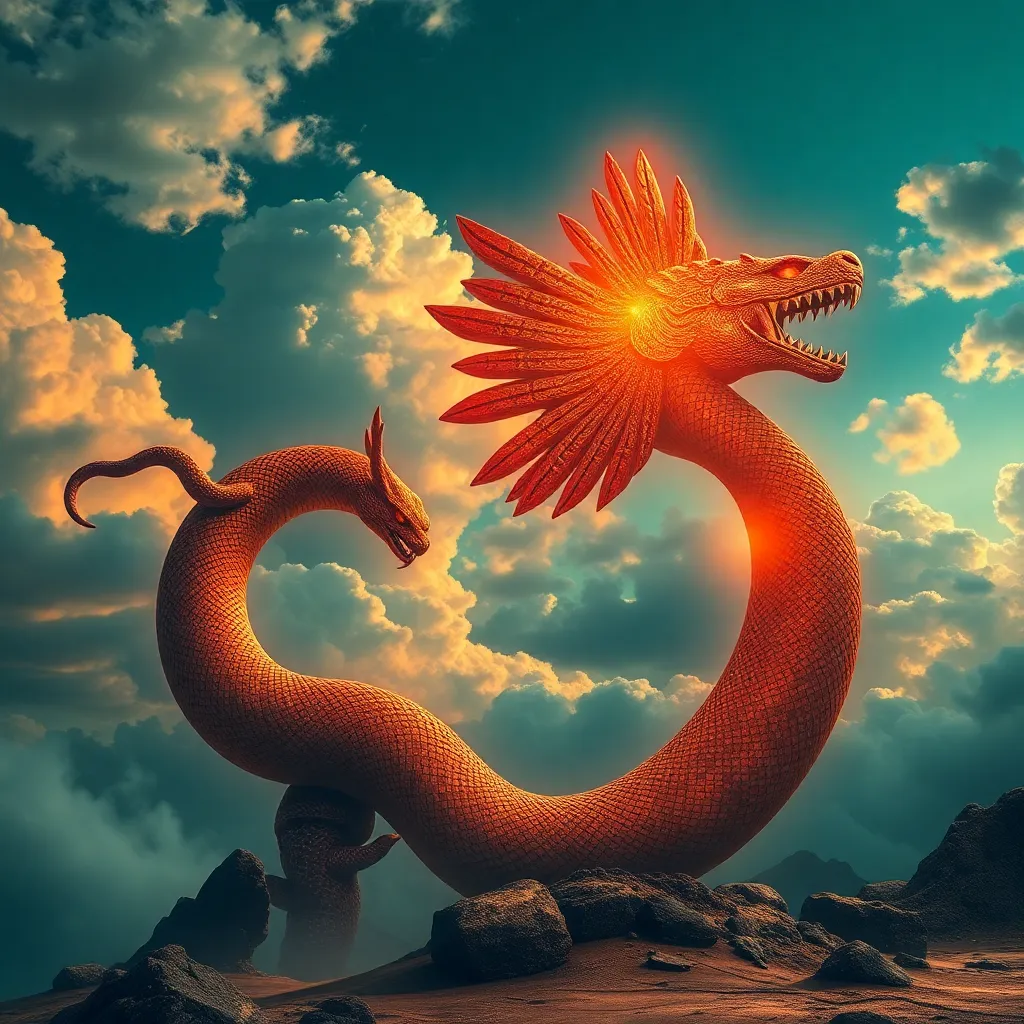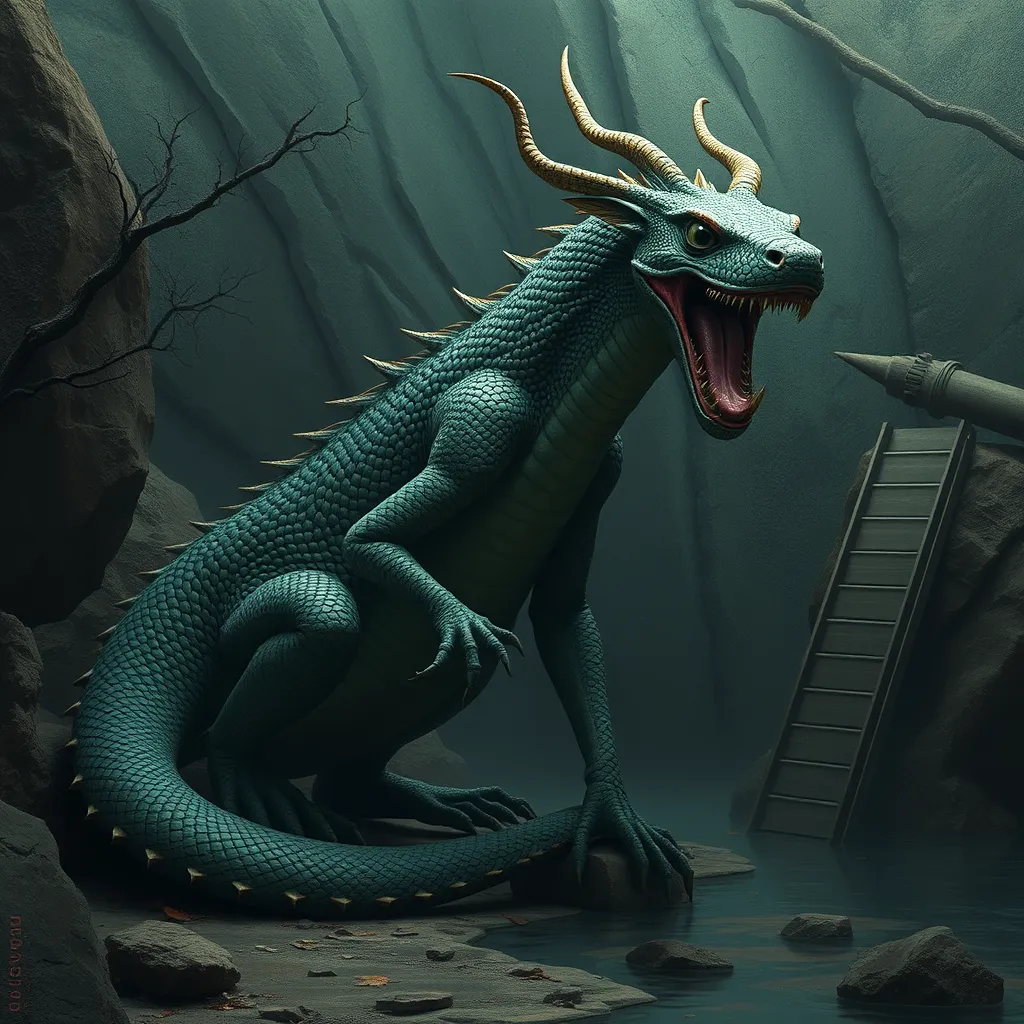The Baku’s Journey: Tracing the Myth’s Origins and Evolution across Time and Culture
I. Introduction
The Baku, a fascinating creature from East Asian mythology, embodies the rich tapestry of cultural narratives that have been passed down through generations. Often depicted as a tapir-like beast with the ability to consume dreams, the Baku serves as both a protector and a harbinger of various meanings within different cultures. Myths like that of the Baku are significant as they shape our understanding of the world, offering insights into the beliefs, fears, and hopes of the societies that create them.
This article aims to explore the origins and evolution of the Baku myth, tracing its journey through time and across cultures, revealing the layers of meaning and significance that have developed along the way.
II. The Origins of the Baku Myth
A. Historical context in ancient cultures
The origins of the Baku myth can be traced back to ancient East Asian cultures, where the boundaries between the natural and supernatural were often fluid. The Baku is believed to have emerged during a time when dream interpretation held significant cultural weight, serving as a bridge between the waking world and the realm of dreams.
B. Early references and depictions of the Baku
Early references to the Baku can be found in ancient texts and folklore. In China, the Baku is often mentioned in connection with dreams and is described in texts dating back to the Tang Dynasty. The creature was depicted in various forms of art, illustrating its significance in the cultural imagination.
C. The Baku in traditional East Asian folklore
- In China, the Baku was revered as a powerful entity capable of consuming nightmares.
- Japanese folklore adopted the Baku, emphasizing its role as a dream eater.
- The creature often symbolizes protection against malevolent forces in dreams.
III. The Baku in Japanese Culture
A. The role of the Baku in Japanese mythology
In Japanese mythology, the Baku is seen as a benevolent creature that protects individuals from nightmares. The belief in the Baku gained prominence during the Edo period, where it became a symbol of hope and comfort for those troubled by restless sleep.
B. Symbolism and characteristics attributed to the Baku
The Baku is often described as having the body of a bear, the trunk of an elephant, and the eyes of a rhinoceros. This unique combination of features contributes to its mystical aura. Symbolically, the Baku represents the intersection of the physical and spiritual worlds, acting as a mediator between dreams and reality.
C. Influence of the Baku on Japanese art and literature
The Baku’s presence in Japanese culture has inspired various forms of art and literature. Artists have depicted the creature in paintings and woodblock prints, while poets have woven its imagery into their verses, illustrating the deep connection between the Baku and the Japanese psyche.
IV. The Baku in Chinese Tradition
A. Historical accounts and variations of the Baku in China
In Chinese tradition, the Baku is known as “Bàkù” (獏) and appears in texts that date back thousands of years. Accounts of its powers and characteristics vary, but it is consistently portrayed as a dream eater, with the ability to absorb nightmares and bring peace to the dreamer.
B. The Baku’s connection to dreams and spiritual realms
The Baku holds a special place in dreams, as it is thought to have the power to not only consume nightmares but also to provide prophetic visions. Many Chinese families would place images of the Baku near their beds in hopes of being protected from bad dreams.
C. The Baku’s presence in Chinese art and storytelling
The Baku has been a popular subject in Chinese art, often depicted in paintings and sculptures. It appears in folklore and tales, where it is celebrated for its role as a guardian of the dream world, further embedding itself in the cultural consciousness.
V. The Baku’s Symbolism and Meaning
A. Interpretation of the Baku as a dream eater
The primary role of the Baku as a dream eater is central to its symbolism. In many cultures, dreams are seen as windows into the subconscious, and the Baku’s ability to consume nightmares reflects the human desire to confront and eliminate fears.
B. The Baku as a protector against nightmares
As a protector, the Baku embodies the hope for safety and security during vulnerable moments of sleep. It is often invoked in rituals and prayers to ward off malevolent spirits that may invade one’s dreams.
C. Broader cultural implications and symbolism of the Baku
The Baku also symbolizes the importance of dreams in cultural narratives. It represents the universal struggle against fear and the quest for peace, making it a timeless figure in both Eastern and global folklore.
VI. The Evolution of the Baku Myth
A. How the myth has transformed over time
As cultures evolved, so did the Baku myth. While its core characteristics remained, its interpretations adapted to fit contemporary beliefs and fears. The Baku’s role as a dream eater has expanded to encompass themes of mental health and emotional well-being in modern society.
B. Modern interpretations and adaptations of the Baku
In contemporary literature and media, the Baku has been reimagined in various forms, from children’s stories to popular anime and manga. These adaptations highlight the creature’s enduring appeal and relevance in today’s cultural landscape.
C. The Baku in contemporary media and popular culture
- Films and television shows often feature the Baku as a symbol of hope.
- Video games incorporate Baku-like creatures as guardians in dream worlds.
- Merchandise, including plush toys and art, showcases the Baku’s popularity among younger generations.
VII. Cross-Cultural Influences and Comparisons
A. Similarities with other mythological creatures
The Baku shares similarities with other mythological creatures, such as the Greek dream deity Morpheus and the Native American Sandman. These figures also embody the themes of dreams and protection, highlighting a common human experience across cultures.
B. How the Baku myth has influenced or been influenced by global folklore
The Baku myth has not only influenced East Asian folklore but has also been shaped by it. As cultures interact, myths evolve, leading to shared narratives and hybrid forms that enrich the global tapestry of mythology.
C. The significance of cross-cultural exchanges in myth evolution
Cross-cultural exchanges have allowed the Baku to resonate beyond its origins, fostering a deeper understanding of shared human experiences. These interactions demonstrate how myths can transcend boundaries, creating a collective narrative that speaks to our universal fears and aspirations.
VIII. Conclusion
A. Recap of the Baku’s journey across time and culture
The Baku’s journey from ancient folklore to contemporary culture illustrates the dynamic nature of myths. It serves as a reminder of the power of storytelling in shaping our understanding of the world.
B. The enduring legacy of the Baku myth
The legacy of the Baku continues to thrive, resonating with individuals seeking comfort and protection in their dreams. Its symbolism transcends cultural boundaries, reminding us of the importance of hope and resilience.
C. Final thoughts on the relevance of myths in understanding cultural identities
Myths like that of the Baku provide valuable insights into cultural identities, revealing shared human experiences and the collective imagination that binds us together. As we explore these narratives, we gain a deeper appreciation for the complexities of our world and the stories that shape our lives.



